Grow sweet potatoes beginner? Absolutely! Imagine harvesting a bounty of vibrant, earthy sweet potatoes from your very own backyard. It’s easier than you think, and this DIY guide will show you exactly how to do it, even if you’ve never grown anything before! For centuries, sweet potatoes have been a staple in diets around the world, from their origins in Central and South America to their widespread cultivation in Asia and Africa. They’re not just delicious; they’re packed with nutrients, making them a fantastic addition to any meal.
But why should you learn to grow sweet potatoes? Well, store-bought sweet potatoes can be expensive, and let’s be honest, nothing beats the taste of freshly harvested, homegrown produce. Plus, gardening is incredibly therapeutic! This DIY project is perfect for beginners because it’s relatively low-maintenance and yields impressive results. I’m going to walk you through every step, from sprouting slips (the little shoots that grow into sweet potato plants) to harvesting your delicious crop. Get ready to grow sweet potatoes beginner style, and enjoy the satisfaction of nurturing your own food from seed to table!
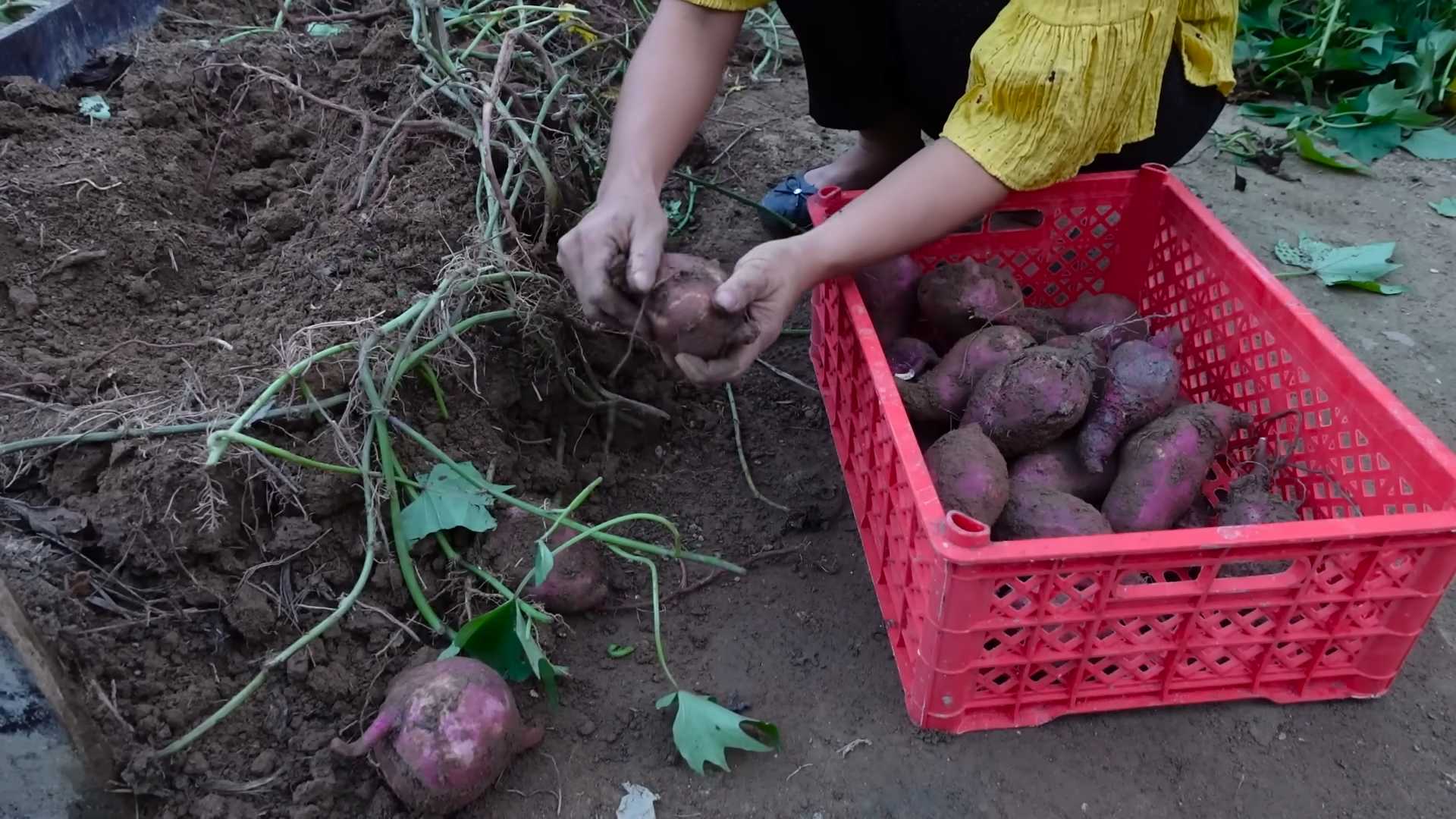
Growing Sweet Potatoes: A Beginner’s Guide to a Bountiful Harvest
Okay, so you want to grow sweet potatoes? Awesome! They’re delicious, nutritious, and surprisingly easy to cultivate once you get the hang of it. I’m going to walk you through everything you need to know, from starting slips to harvesting your sweet potato bounty. Let’s get digging!
What You’ll Need
Before we dive into the nitty-gritty, let’s gather our supplies. This will make the whole process smoother and less stressful.
* Sweet Potatoes (for slips): Choose organic sweet potatoes from the grocery store or a local farmer’s market. Avoid those treated with sprout inhibitors, as they won’t produce slips.
* Containers: You’ll need containers to start your slips. Plastic tubs, glass jars, or even repurposed food containers work great.
* Water: Clean, fresh water is essential for growing slips.
* Toothpicks: These will help suspend the sweet potato in water.
* Potting Mix: A well-draining potting mix is crucial for planting your slips.
* Garden Space: Choose a sunny spot in your garden with well-drained soil. Sweet potatoes love sunshine!
* Gardening Tools: You’ll need a shovel, trowel, and possibly a garden fork.
* Fertilizer (optional): A balanced fertilizer can help boost growth, but it’s not strictly necessary.
* Mulch (optional): Mulch helps retain moisture and suppress weeds. Straw, hay, or wood chips work well.
Starting Sweet Potato Slips: The Magic Begins
Sweet potato slips are basically baby sweet potato plants that sprout from the sweet potato itself. This is how we get our plants ready for the garden. Don’t worry, it’s easier than it sounds!
1. Prepare the Sweet Potatoes: Wash your sweet potatoes thoroughly to remove any dirt or debris.
2. Choose Your Method: There are two main ways to start slips: water propagation and soil propagation. I’ll explain both.
* Water Propagation: This is the most common method and the one I usually use.
* Insert toothpicks around the middle of the sweet potato, spacing them evenly.
* Suspend the sweet potato in a container of water, with the bottom half submerged. Make sure the water level stays consistent.
* Place the container in a warm, sunny location. A windowsill is perfect.
* Change the water every few days to prevent algae growth.
* Soil Propagation: This method involves burying the sweet potato in soil.
* Fill a container with moist potting mix.
* Bury the sweet potato horizontally, leaving the top third exposed.
* Place the container in a warm, sunny location.
* Keep the soil consistently moist, but not soggy.
3. Wait Patiently: This is the hardest part! It can take several weeks for slips to start sprouting. Be patient and keep the sweet potatoes in a warm, sunny location. You should start to see little sprouts emerging from the sweet potato.
4. Harvesting the Slips: Once the slips are about 6-8 inches long, they’re ready to be harvested.
* Gently twist or cut the slips off the sweet potato.
* Place the slips in a glass of water to encourage root growth. This usually takes a few days.
Preparing Your Garden Bed: Sweet Potato Paradise
Sweet potatoes need a sunny spot with well-drained soil. They’re not too picky, but they do appreciate a little TLC.
1. Choose a Sunny Location: Sweet potatoes need at least 6-8 hours of sunlight per day.
2. Prepare the Soil: Loosen the soil with a shovel or garden fork. Remove any rocks, weeds, or debris.
3. Amend the Soil (Optional): If your soil is heavy clay or sandy, you may want to amend it with compost or other organic matter. This will improve drainage and fertility.
4. Create Ridges or Hills: Sweet potatoes grow best in raised ridges or hills. This helps with drainage and allows the roots to expand. Create ridges that are about 8-12 inches high and 12-18 inches wide. Space the ridges about 3-4 feet apart.
Planting Your Sweet Potato Slips: Time to Get Growing!
Now for the fun part! Planting your slips is where you really start to see your sweet potato dreams come to life.
1. Water the Slips: Before planting, water the slips thoroughly. This will help them establish roots quickly.
2. Plant the Slips: Plant the slips about 12-18 inches apart along the ridges. Bury the stems up to the first set of leaves.
3. Water Thoroughly: After planting, water the slips thoroughly. This will help settle the soil and encourage root growth.
4. Mulch (Optional): Apply a layer of mulch around the plants to help retain moisture and suppress weeds.
Caring for Your Sweet Potato Plants: Nurturing Your Crop
Sweet potatoes are relatively low-maintenance, but they do need some care to thrive.
1. Watering: Water regularly, especially during dry periods. Sweet potatoes need consistent moisture to produce a good crop. Aim for about 1 inch of water per week.
2. Weeding: Keep the garden bed free of weeds. Weeds compete with sweet potatoes for nutrients and water.
3. Fertilizing (Optional): If you want to give your sweet potatoes a boost, you can fertilize them with a balanced fertilizer. Follow the instructions on the fertilizer package. Avoid over-fertilizing, as this can lead to excessive vine growth and fewer sweet potatoes.
4. Vine Management: Sweet potato vines can get quite long and sprawling. You can prune them back if they start to take over your garden. However, be careful not to prune too much, as this can reduce your yield.
Harvesting Your Sweet Potatoes: The Grand Finale!
This is the moment you’ve been waiting for! Harvesting your sweet potatoes is the culmination of all your hard work.
1. Timing: Sweet potatoes are typically ready to harvest about 90-120 days after planting. The leaves will start to turn yellow and the vines will begin to die back.
2. Digging: Use a shovel or garden fork to carefully dig up the sweet potatoes. Be careful not to damage the tubers. Start digging a few feet away from the plant and work your way in.
3. Curing: Curing is essential for improving the flavor and storage life of sweet potatoes.
* Gently brush off any excess dirt from the sweet potatoes.
* Place the sweet potatoes in a warm, humid location (80-85°F and 85-90% humidity) for 7-10 days. A greenhouse or a warm, sunny room works well.
* After curing, store the sweet potatoes in a cool, dry, and well-ventilated location (55-60°F).
4. Enjoy! Now you can enjoy your homegrown sweet potatoes in all sorts of delicious dishes!
Troubleshooting: Common Sweet Potato Problems
Even with the best care, you might encounter some problems along the way. Here are a few common issues and how to deal with them:
Okay, so you want to grow sweet potatoes? Awesome! They’re delicious, nutritious, and surprisingly easy to cultivate once you get the hang of it. I’m going to walk you through everything you need to know, from starting slips to harvesting your sweet potato bounty. Let’s get digging!
What You’ll Need
Before we dive into the nitty-gritty, let’s gather our supplies. This will make the whole process smoother and less stressful.
* Sweet Potatoes (for slips): Choose organic sweet potatoes from the grocery store or a local farmer’s market. Avoid those treated with sprout inhibitors, as they won’t produce slips.
* Containers: You’ll need containers to start your slips. Plastic tubs, glass jars, or even repurposed food containers work great.
* Water: Clean, fresh water is essential for growing slips.
* Toothpicks: These will help suspend the sweet potato in water.
* Potting Mix: A well-draining potting mix is crucial for planting your slips.
* Garden Space: Choose a sunny spot in your garden with well-drained soil. Sweet potatoes love sunshine!
* Gardening Tools: You’ll need a shovel, trowel, and possibly a garden fork.
* Fertilizer (optional): A balanced fertilizer can help boost growth, but it’s not strictly necessary.
* Mulch (optional): Mulch helps retain moisture and suppress weeds. Straw, hay, or wood chips work well.
Starting Sweet Potato Slips: The Magic Begins
Sweet potato slips are basically baby sweet potato plants that sprout from the sweet potato itself. This is how we get our plants ready for the garden. Don’t worry, it’s easier than it sounds!
1. Prepare the Sweet Potatoes: Wash your sweet potatoes thoroughly to remove any dirt or debris.
2. Choose Your Method: There are two main ways to start slips: water propagation and soil propagation. I’ll explain both.
* Water Propagation: This is the most common method and the one I usually use.
* Insert toothpicks around the middle of the sweet potato, spacing them evenly.
* Suspend the sweet potato in a container of water, with the bottom half submerged. Make sure the water level stays consistent.
* Place the container in a warm, sunny location. A windowsill is perfect.
* Change the water every few days to prevent algae growth.
* Soil Propagation: This method involves burying the sweet potato in soil.
* Fill a container with moist potting mix.
* Bury the sweet potato horizontally, leaving the top third exposed.
* Place the container in a warm, sunny location.
* Keep the soil consistently moist, but not soggy.
3. Wait Patiently: This is the hardest part! It can take several weeks for slips to start sprouting. Be patient and keep the sweet potatoes in a warm, sunny location. You should start to see little sprouts emerging from the sweet potato.
4. Harvesting the Slips: Once the slips are about 6-8 inches long, they’re ready to be harvested.
* Gently twist or cut the slips off the sweet potato.
* Place the slips in a glass of water to encourage root growth. This usually takes a few days.
Preparing Your Garden Bed: Sweet Potato Paradise
Sweet potatoes need a sunny spot with well-drained soil. They’re not too picky, but they do appreciate a little TLC.
1. Choose a Sunny Location: Sweet potatoes need at least 6-8 hours of sunlight per day.
2. Prepare the Soil: Loosen the soil with a shovel or garden fork. Remove any rocks, weeds, or debris.
3. Amend the Soil (Optional): If your soil is heavy clay or sandy, you may want to amend it with compost or other organic matter. This will improve drainage and fertility.
4. Create Ridges or Hills: Sweet potatoes grow best in raised ridges or hills. This helps with drainage and allows the roots to expand. Create ridges that are about 8-12 inches high and 12-18 inches wide. Space the ridges about 3-4 feet apart.
Planting Your Sweet Potato Slips: Time to Get Growing!
Now for the fun part! Planting your slips is where you really start to see your sweet potato dreams come to life.
1. Water the Slips: Before planting, water the slips thoroughly. This will help them establish roots quickly.
2. Plant the Slips: Plant the slips about 12-18 inches apart along the ridges. Bury the stems up to the first set of leaves.
3. Water Thoroughly: After planting, water the slips thoroughly. This will help settle the soil and encourage root growth.
4. Mulch (Optional): Apply a layer of mulch around the plants to help retain moisture and suppress weeds.
Caring for Your Sweet Potato Plants: Nurturing Your Crop
Sweet potatoes are relatively low-maintenance, but they do need some care to thrive.
1. Watering: Water regularly, especially during dry periods. Sweet potatoes need consistent moisture to produce a good crop. Aim for about 1 inch of water per week.
2. Weeding: Keep the garden bed free of weeds. Weeds compete with sweet potatoes for nutrients and water.
3. Fertilizing (Optional): If you want to give your sweet potatoes a boost, you can fertilize them with a balanced fertilizer. Follow the instructions on the fertilizer package. Avoid over-fertilizing, as this can lead to excessive vine growth and fewer sweet potatoes.
4. Vine Management: Sweet potato vines can get quite long and sprawling. You can prune them back if they start to take over your garden. However, be careful not to prune too much, as this can reduce your yield.
Harvesting Your Sweet Potatoes: The Grand Finale!
This is the moment you’ve been waiting for! Harvesting your sweet potatoes is the culmination of all your hard work.
1. Timing: Sweet potatoes are typically ready to harvest about 90-120 days after planting. The leaves will start to turn yellow and the vines will begin to die back.
2. Digging: Use a shovel or garden fork to carefully dig up the sweet potatoes. Be careful not to damage the tubers. Start digging a few feet away from the plant and work your way in.
3. Curing: Curing is essential for improving the flavor and storage life of sweet potatoes.
* Gently brush off any excess dirt from the sweet potatoes.
* Place the sweet potatoes in a warm, humid location (80-85°F and 85-90% humidity) for 7-10 days. A greenhouse or a warm, sunny room works well.
* After curing, store the sweet potatoes in a cool, dry, and well-ventilated location (55-60°F).
4. Enjoy! Now you can enjoy your homegrown sweet potatoes in all sorts of delicious dishes!
Troubleshooting: Common Sweet Potato Problems
Even with the best care, you might encounter some problems along the way. Here are a few common issues and how to deal with them:
* Slips Not Sprouting: Make sure the sweet potatoes are in a warm, sunny location and that the water is changed regularly. If they still don’t sprout after a few weeks, try a different sweet potato.
* Yellowing Leaves: This could be a sign of nutrient deficiency or overwatering. Check the soil moisture and consider fertilizing with a balanced fertilizer.
* Pests: Sweet potatoes are generally pest-resistant, but they can sometimes be attacked by aphids or flea beetles. Use insecticidal soap or neem oil to control these pests.
* Diseases: Sweet potatoes can be susceptible to fungal diseases, such as stem rot. Ensure good air circulation and avoid overwatering to prevent these diseases.
Tips for Success
Here are a few extra tips to help you grow the best sweet potatoes possible:
* Choose the Right Variety: There are many different varieties of sweet potatoes, each with its own unique flavor and characteristics. Choose a variety that is well-suited to your climate and growing conditions.
* Rotate Your Crops: Avoid planting sweet potatoes in the same location year after year. Crop rotation helps prevent soil depletion and reduces the risk of pests and diseases.
* Don’t Overwater: Sweet potatoes are relatively drought-tolerant and don’t need a lot of water. Overwatering can lead to root rot and other problems.
* Be Patient: Growing sweet potatoes takes time and patience. Don’t get discouraged if you don’t see results immediately. Just keep providing them with the care they need, and you
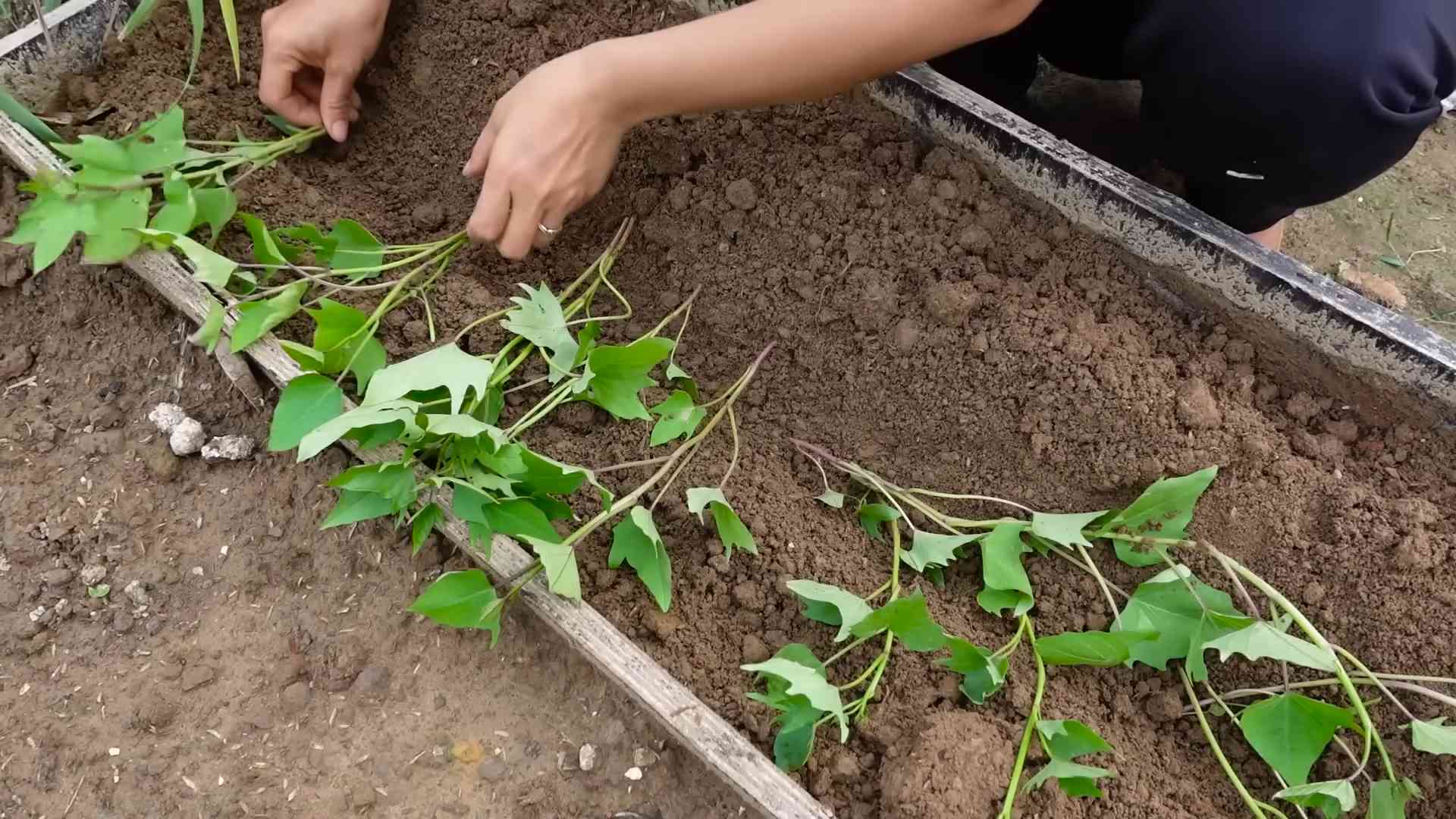
Conclusion
So, there you have it! Growing your own sweet potatoes from slips is not only surprisingly easy, even for beginners, but it’s also incredibly rewarding. Imagine the satisfaction of harvesting your own vibrant, nutrient-packed sweet potatoes, knowing exactly where they came from and how they were grown. Forget the bland, mass-produced varieties at the grocery store; with this simple DIY trick, you can cultivate sweet potatoes bursting with flavor and freshness right in your own backyard or even in containers on your patio.
This method is a must-try because it bypasses the need for purchasing expensive starter plants. You’re essentially creating your own sweet potato “nursery” from a single, readily available sweet potato. Think of the possibilities! You can experiment with different varieties, from the classic orange Beauregard to the more exotic purple or white sweet potatoes, all from the comfort of your home.
Ready to take your sweet potato game to the next level? Consider these variations:
* **Vertical Gardening:** If space is limited, try growing your sweet potato slips in a vertical garden setup. This not only maximizes your growing area but also adds a visually appealing element to your garden.
* **Hydroponics:** For the adventurous gardener, explore growing sweet potato slips hydroponically. This method involves suspending the sweet potato in water with added nutrients, resulting in faster growth and potentially larger yields.
* **Companion Planting:** Plant your sweet potatoes alongside beneficial companion plants like beans, peas, or thyme. These plants can help deter pests and improve soil health, leading to a more successful harvest.
* **Different Containers:** While a glass jar works perfectly well, you can also use other containers like plastic tubs or even repurposed food containers. Just make sure the container is clean and large enough to accommodate the sweet potato and water.
* **Sunlight Experiment:** Observe how different levels of sunlight affect the growth of your slips. Some varieties may prefer more direct sunlight, while others may thrive in partial shade.
Don’t be intimidated if you’re a complete beginner. This DIY trick is designed to be foolproof. The key is patience and consistent care. Once you see those first little roots and sprouts emerge, you’ll be hooked!
We wholeheartedly encourage you to give this DIY sweet potato slip growing method a try. It’s a fun, educational, and ultimately delicious way to connect with your food and experience the joy of gardening. And most importantly, it’s a fantastic way to ensure you have a steady supply of fresh, homegrown sweet potatoes for all your culinary creations.
Once you’ve successfully grown your sweet potato slips and transplanted them into your garden, we’d love to hear about your experience! Share your photos, tips, and any variations you tried in the comments below. Let’s build a community of sweet potato enthusiasts and learn from each other’s successes (and occasional failures!). Happy growing!
Frequently Asked Questions (FAQ)
What kind of sweet potato should I use to grow slips?
You can use any sweet potato you find at the grocery store or farmer’s market, but organic sweet potatoes are generally recommended. Non-organic potatoes may have been treated with growth inhibitors to prevent sprouting, which can hinder the slip-growing process. Look for sweet potatoes that are firm, free of blemishes, and have a few “eyes” or small bumps on the surface. These eyes are where the sprouts will emerge. If you have access to different varieties, experiment to see which ones grow best in your area.
How long does it take for sweet potato slips to grow?
The time it takes for sweet potato slips to grow can vary depending on factors like temperature, humidity, and the variety of sweet potato. Generally, you can expect to see sprouts emerging within 2-4 weeks. Once the sprouts are about 6-8 inches long, they’re ready to be removed and planted. Be patient, and don’t be discouraged if it takes a little longer. Consistent moisture and warmth are key to successful slip growth.
How do I remove the slips from the sweet potato?
Once the slips are large enough, gently twist or cut them off the sweet potato, being careful not to damage the roots. You can also gently pull them off. Some people prefer to root the slips in water for a few days before planting them in soil. To do this, place the cut end of the slip in a glass of water, ensuring that the leaves remain above the water line. Roots should develop within a few days.
What kind of soil is best for growing sweet potatoes?
Sweet potatoes prefer well-drained, sandy loam soil. They don’t thrive in heavy clay soil, which can become waterlogged and hinder root development. If your soil is heavy, amend it with compost, sand, or other organic matter to improve drainage. The ideal soil pH for sweet potatoes is between 5.5 and 6.5.
How much sunlight do sweet potatoes need?
Sweet potatoes need at least 6-8 hours of direct sunlight per day to thrive. Choose a sunny location in your garden for planting. If you’re growing sweet potatoes in containers, make sure to place them in a spot that receives plenty of sunlight.
How often should I water sweet potatoes?
Water sweet potatoes regularly, especially during dry periods. Keep the soil consistently moist, but avoid overwatering, which can lead to root rot. A good rule of thumb is to water deeply when the top inch of soil feels dry to the touch.
When is the best time to harvest sweet potatoes?
Sweet potatoes are typically ready to harvest about 90-120 days after planting. The leaves will start to turn yellow and the vines will begin to die back. To harvest, carefully dig around the plants, being careful not to damage the tubers. Gently lift the sweet potatoes from the soil.
How do I cure sweet potatoes after harvesting?
Curing sweet potatoes is essential for developing their sweetness and improving their storage life. To cure sweet potatoes, place them in a warm, humid environment (80-85°F and 85-90% humidity) for about 7-10 days. This can be achieved by placing them in a well-ventilated room with a humidifier or by using a curing chamber. After curing, store the sweet potatoes in a cool, dry place (55-60°F) for several months.
Can I grow sweet potatoes in containers?
Yes, you can definitely grow sweet potatoes in containers! Choose a large container (at least 20 gallons) with good drainage. Fill the container with well-draining potting mix and plant the slips as you would in the ground. Make sure the container receives plenty of sunlight and water regularly.
What are some common pests and diseases that affect sweet potatoes?
Some common pests that affect sweet potatoes include sweet potato weevils, flea beetles, and aphids. Diseases include stem rot, black rot, and scurf. To prevent pests and diseases, practice good garden hygiene, use disease-resistant varieties, and consider using organic pest control methods. Crop rotation can also help to prevent soilborne diseases.
Can I eat the sweet potato leaves?
Yes, sweet potato leaves are edible and nutritious! They can be eaten raw in salads or cooked like spinach. Choose young, tender leaves for the best flavor. Sweet potato leaves are a good source of vitamins A and C, as well as fiber and antioxidants.
What if my sweet potato rots in the water?
Sometimes, despite your best efforts, the sweet potato may rot in the water. This can be due to several factors, including using a damaged sweet potato, overwatering, or fungal infections. If you notice signs of rot, such as a foul odor or mushy texture, discard the sweet potato and start with a fresh one. Ensure that the water is clean and changed regularly to prevent bacterial growth.

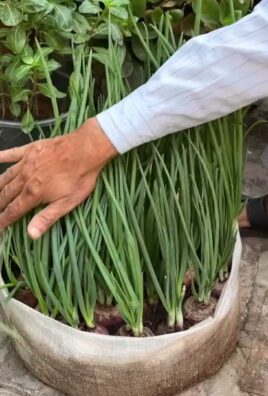
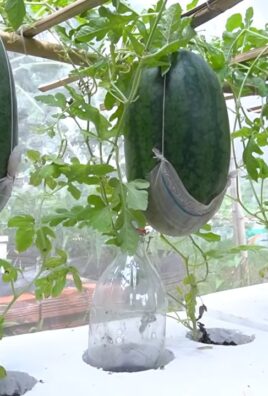
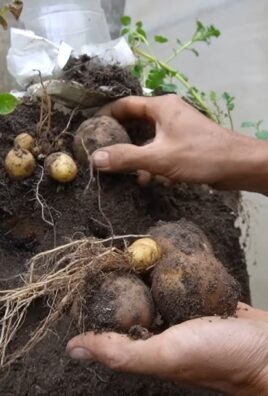
Leave a Comment